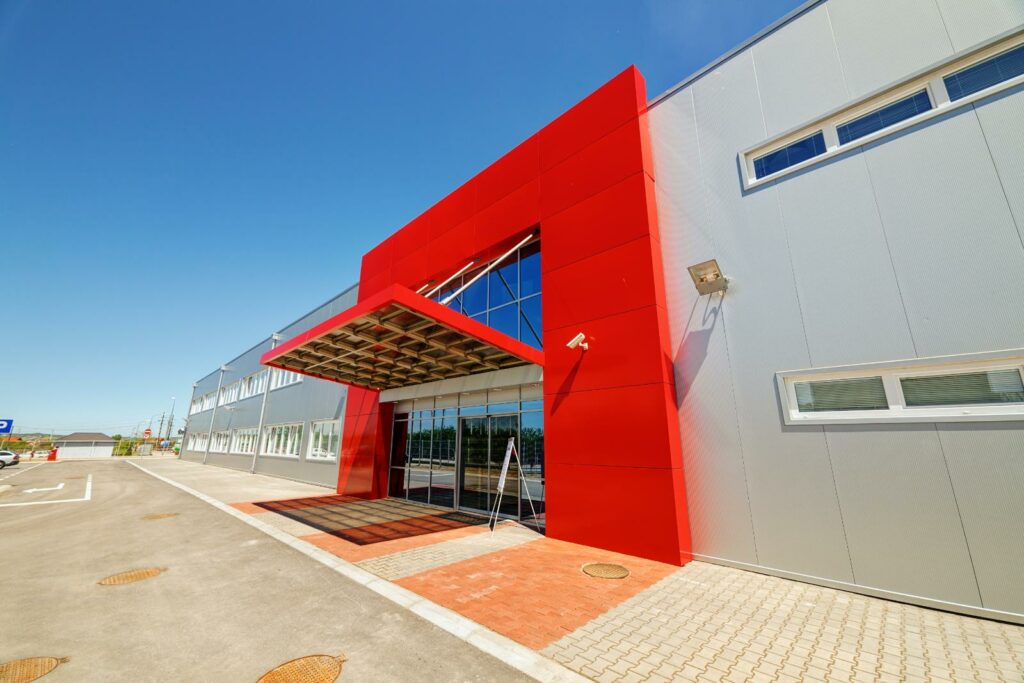
Contents
When considering construction options for long-lasting structures, you might not be aware of the exceptional durability that custom metal buildings offer.
The strength and resilience of metal buildings go beyond conventional construction materials.
Have you ever wondered why choosing custom metal buildings could be the key to ensuring superior durability in your projects?
Key Takeaways
- Custom metal buildings offer unparalleled durability and cost-effectiveness.
- Structural integrity and longevity are ensured through steel frame strength and weather resistance.
- Proper maintenance, attention to detail, and regular inspections are crucial for optimal performance and longevity.
- Energy efficiency and cost-effectiveness are key benefits, with insulation maintaining consistent indoor temperatures and reducing heating and cooling costs.
Benefits of Custom Metal Buildings
When considering construction options, custom metal buildings offer unparalleled durability and cost-effectiveness. One key benefit of custom metal buildings is their design flexibility. Metal buildings can be easily customized to fit your specific needs, whether it’s for residential, commercial, or industrial purposes. With metal’s strength and malleability, architects and builders can create unique and innovative designs that cater to your preferences while ensuring structural integrity.
Another advantage of custom metal buildings is their eco-friendly construction. Metal is one of the most sustainable building materials available. It’s recyclable and can be reused indefinitely without losing its properties. Additionally, metal buildings have a longer lifespan compared to traditional structures, reducing the need for frequent replacements and minimizing waste production. By choosing a custom metal building, you aren’t only investing in a durable and cost-effective solution but also contributing to environmental conservation efforts.
Structural Integrity of Metal Buildings
When evaluating the structural integrity of metal buildings, focus on the steel frame strength and its ability to withstand various loads and stresses.
Consider the weather resistance of the materials used, as metal buildings are often exposed to harsh environmental conditions.
These aspects play a crucial role in ensuring the durability and longevity of custom metal structures.
Steel Frame Strength
The steel frame strength of custom metal buildings directly impacts their structural integrity, ensuring superior durability and long-term performance. When considering steel frame design, it’s crucial to focus on the material’s tensile strength, yield strength, and overall stability. A well-designed steel frame not only enhances the structural integrity of the building but also contributes to its aesthetic appeal. The table below provides a comparison of different steel grades commonly used in metal buildings, highlighting their key mechanical properties.
| Steel Grade | Tensile Strength (MPa) | Yield Strength (MPa) |
|---|---|---|
| A36 | 400-550 | 250 |
| A572 | 450-620 | 290 |
| A588 | 485 | 345 |
Weather Resistance
The structural integrity of custom metal buildings in the face of varying weather conditions relies heavily on their ability to withstand environmental challenges like corrosive elements and extreme temperatures. Corrosion prevention is crucial in ensuring the longevity of metal structures. Utilizing protective coatings, such as galvanization or specialized paints, can significantly reduce the impact of corrosive agents like moisture and chemicals.
Additionally, metal buildings must be designed to withstand extreme temperatures without compromising their structural integrity. Proper insulation and ventilation systems play a key role in regulating internal temperatures and preventing thermal expansion or contraction that could weaken the building over time.
Longevity of Metal Buildings
Metal buildings are renowned for their strength in construction, ensuring longevity even in harsh conditions.
Their resilience to elements like wind, rain, and snow contributes significantly to their durability over time.
These factors combined make metal buildings a reliable choice for long-term structural solutions.
Strength in Construction
For optimal performance and longevity in construction, ensuring proper maintenance of metal buildings is crucial. When it comes to the strength of construction in custom metal buildings, attention to detail in both construction materials and building design plays a significant role.
To maximize the longevity and durability of metal structures, consider the following:
- Regular inspections for signs of corrosion or wear.
- Utilizing high-quality steel or aluminum for structural components.
- Implementing proper drainage systems to prevent water damage.
Resilience to Elements
Implementing proper maintenance practices is essential for ensuring the resilience of custom metal buildings against harsh environmental elements. Metal buildings excel in durability and resilience to various elements, making them a long-lasting choice for construction. Here is a comparison table showcasing the resilience of custom metal buildings to different environmental factors:
| Environmental Factor | Impact on Resilience | Recommended Maintenance |
|---|---|---|
| Corrosive Environments | Lowers Resilience | Regular inspections and coatings |
| Extreme Temperatures | Minimal Impact | Proper insulation |
| High Winds | High Resilience | Secure anchoring systems |
| Heavy Snowfall | Moderate Resilience | Snow removal protocols |
Weather Resistance of Metal Buildings
Withstanding extreme weather conditions is a crucial aspect of ensuring the longevity and performance of metal buildings. When it comes to weather resistance, custom metal buildings excel in various challenging environments due to their inherent properties. Here are the key factors that contribute to the exceptional weather resistance of metal buildings:
Corrosion Resistance: Metal buildings are typically constructed using materials like galvanized steel or aluminum, which are highly resistant to corrosion. This resistance ensures that the structural integrity of the building remains intact even in corrosive environments, such as coastal areas or regions with high levels of industrial pollution.
Extreme Temperature Tolerance: Metal buildings are designed to withstand a wide range of temperatures, from scorching heat to freezing cold. The thermal properties of metal allow these structures to remain stable and unaffected by temperature fluctuations, making them ideal for regions with extreme weather conditions.
Weatherproof Coatings: To enhance their weather resistance, metal buildings can be coated with weatherproof finishes that provide an additional layer of protection against elements like rain, snow, and UV radiation. These coatings not only improve the durability of the building but also contribute to its aesthetic appeal.
Customization Options for Metal Buildings
To enhance the functionality and aesthetics of metal buildings, a diverse array of customization options is available to meet specific requirements. Design flexibility is a key feature when opting for custom metal buildings. You can choose from various designs, styles, and configurations to suit your needs. Whether you prefer a traditional look or a more modern aesthetic, customization allows you to create a building that reflects your unique taste and requirements.
Aesthetic appeal plays a significant role in the customization of metal buildings. With a range of colors, finishes, and architectural details to choose from, you can ensure that your metal building complements its surroundings and stands out visually. Custom sizes are another advantage of opting for a personalized metal building. Whether you need a small storage unit or a large commercial structure, custom sizing ensures that the building fits your space perfectly.
Unique features can also be incorporated into custom metal buildings. From specialized doors and windows to insulation options and ventilation systems, customization allows you to add specific features that enhance the functionality and usability of the building. By tailoring these details to your requirements, you can create a metal building that not only meets your needs but exceeds your expectations.
Maintenance Requirements for Metal Buildings
Maintenance for metal buildings involves regular inspections and timely repairs to ensure structural integrity and longevity. By adhering to a well-planned maintenance schedule, you can maximize the durability benefits of your custom metal building.
Here are some key points to consider for maintaining your metal structure effectively:
Regular Inspections: Conduct routine inspections to identify any signs of wear, corrosion, or damage. Addressing issues promptly can prevent them from escalating and help maintain the structural stability of the building.
Proactive Repairs: Implement a proactive approach to repairs by promptly fixing any identified issues. This proactive maintenance strategy can help you avoid costly repairs in the future and contribute to long-term maintenance savings.
Protective Coatings: Consider applying protective coatings to your metal building to enhance its resistance to corrosion and weathering. These coatings can prolong the lifespan of the structure and reduce the frequency of maintenance interventions.
Energy Efficiency of Metal Buildings
For optimal performance and cost savings, enhancing the energy efficiency of your custom metal building is essential. Metal buildings offer excellent opportunities for energy efficiency and sustainability. By implementing energy-efficient practices, you can significantly reduce your building’s environmental impact while lowering operational costs.
One key aspect of enhancing energy efficiency in metal buildings is insulation. Proper insulation helps maintain consistent indoor temperatures, reducing the load on heating and cooling systems. Additionally, investing in high-quality insulation materials can prevent energy loss through walls and roofs, leading to substantial energy savings over time.
Another crucial factor to consider is the design of your metal building. Strategic placement of windows and skylights can maximize natural light, reducing the need for artificial lighting during the day. Moreover, incorporating features like reflective roofing materials can help minimize heat absorption, further improving energy efficiency.
Furthermore, integrating energy-efficient HVAC systems and appliances can significantly contribute to reducing energy consumption in your metal building. Upgrading to energy-efficient options not only lowers your carbon footprint but also leads to long-term cost savings through reduced utility bills.
Cost-Effectiveness of Metal Buildings
Enhancing the cost-effectiveness of metal buildings requires a meticulous analysis of construction materials and maintenance expenses to ensure long-term financial viability. When considering the cost efficiency and sustainability of metal buildings, several key factors come into play:
Long-Term Savings: Metal buildings are known for their durability and low maintenance requirements, leading to significant cost savings over time. The initial investment may be slightly higher than traditional construction, but the long-term savings on repairs and maintenance make them a cost-effective choice in the end.
Energy Efficiency: Metal buildings can be designed to be highly energy-efficient, reducing heating and cooling costs. With proper insulation and reflective roofing options, these buildings can help you save on energy bills, contributing to long-term cost efficiency.
Recyclability: Sustainability is a key aspect of cost-effectiveness. Metal buildings are often made from recycled materials and are fully recyclable at the end of their lifespan. This not only reduces the environmental impact but also can lead to cost savings through potential rebates or incentives for using sustainable materials.
Summary
Custom metal buildings offer superior durability due to their structural integrity, longevity, weather resistance, customization options, low maintenance requirements, energy efficiency, and cost-effectiveness.
These buildings provide a reliable and long-lasting solution for your construction needs, with the added benefit of being able to withstand harsh weather conditions and require minimal upkeep.
Choose custom metal buildings for a durable and efficient building solution that will stand the test of time.
Recent Posts
3 Tips for Personalized Metal Garage Solutions
Finding personalized metal garage solutions can transform your cluttered space into a functional haven. By
Guide to Lasting Metal Structures for Homes
Imagine a sturdy metal garage standing proud against the fiercest storms, much like a lighthouse
What Are Affordable Metal Garage Options for Farms?
Imagine you’re managing a bustling farm like Smith’s Acres, where every inch of space counts.




